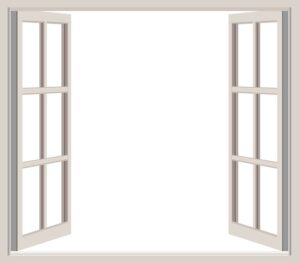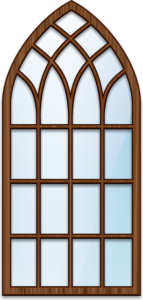Efficient Window Upgrades: A Homeowner’s Guide to Energy Savings and Stylish Replacements
When considering window replacements for energy efficiency and cost savings, it's crucial to ev…….

When considering window replacements for energy efficiency and cost savings, it's crucial to evaluate your current windows' performance, considering frame materials, glazing options, and sealing effectiveness. High-efficiency windows with low-E coatings, argon gas between multiple panes, and quality seals can significantly reduce heating and cooling costs by minimizing heat loss in winter and heat gain in summer. Understanding the U-value and Solar Heat Gain Coefficient (SHGC) ratings is essential for selecting windows that align with your comfort and budget while optimizing energy conservation. Climate-specific needs should also be considered to ensure the best window choice. Wood windows offer traditional charm and natural insulation but require regular maintenance, while vinyl windows are low-maintenance and durable, with a range of color options for aesthetic appeal. Composite windows combine the benefits of wood and vinyl, providing superior insulation with less maintenance. Professional installation is recommended to maximize window performance and prevent long-term issues that could void warranties and negate energy savings. For those concerned about costs, various financing options are available, including loans and government incentives that can offset the initial investment and provide additional financial benefits for adopting energy-efficient solutions. Stay informed about tax credits, rebates, and local utility programs to enhance your return on investment post-installation.
Homeowners eager to enhance their living spaces with efficient window replacements face a multifaceted decision-making process. This article guides you through the critical aspects of selecting windows that balance energy efficiency, durability, and aesthetics. From assessing your home’s unique needs to exploring the diverse materials—wood, vinyl, and composites—each section offers insights into the best choices for your situation. Additionally, we delve into essential features like double or triple panes, argon gas fillings, and low-E coatings, all of which contribute to a window’s performance. Understanding the pros and cons of professional installation versus DIY approaches is also paramount for maximizing long-term savings. Lastly, we explore various financing options available for different budgets, including tax incentives and rebates that can make your window project more affordable.
- Assessing Your Home's Window Needs: Understanding Energy Efficiency and Performance
- The Variety of Window Materials: Comparing Wood, Vinyl, and Composite Options for Durability and Aesthetics
- Key Features to Look For in Modern Windows: Double or Triple Panes, Argon Gas, and Low-E Coatings
- Professional Installation vs. DIY: The Importance of Proper Window Replacement Techniques for Long-Term Savings
- Financing Your Window Project: Options for Budgets Big and Small, Including Tax Incentives and Rebates
Assessing Your Home's Window Needs: Understanding Energy Efficiency and Performance
When considering window replacements for your home, it’s crucial to evaluate your current windows’ energy efficiency and performance. Old or poorly insulated windows can lead to significant heat loss in winter and unwanted heat gain in summer, driving up your energy bills. Homeowners should assess the thermal properties of their windows by examining factors such as frame material, glazing options, and the presence of weather stripping or seals. High-performance windows with low-emissivity (low-E) coatings, argon gas fills, and multiple panes can drastically improve energy efficiency. The U-value, which measures heat transfer, and the Solar Heat Gain Coefficient (SHGC), which quantifies solar radiation entering through glass, are important metrics to consider when selecting windows. By understanding these technical aspects, homeowners can make informed decisions that align with their comfort preferences and budget while promoting energy conservation and sustainability in their homes. Additionally, local climate conditions should be taken into account; for instance, different window types may be more suitable for regions with extreme temperatures or high winds. Taking the time to research and understand these factors will help ensure your home is equipped with windows that provide optimal performance and energy efficiency for years to come.
The Variety of Window Materials: Comparing Wood, Vinyl, and Composite Options for Durability and Aesthetics
When homeowners consider efficient window replacements, the choice of material is pivotal, as it affects both durability and aesthetic appeal. Wood windows exude a classic charm and are renowned for their natural insulation properties. They can be crafted to match any architectural style, from contemporary to traditional, offering a timeless elegance that complements the home’s design. However, wood requires regular maintenance to sustain its condition and performance.
Vinyl windows have emerged as a popular alternative, celebrated for their low-maintenance nature and durability. They are resistant to rot, warping, and require minimal upkeep, making them an attractive option for homeowners seeking long-term value without the consistent care that wood demands. Vinyl windows also come in a variety of colors and finishes, allowing for a wide range of design possibilities that can enhance the curb appeal of any property.
Composite windows offer a blend of materials, often incorporating wood fiber with thermoplastic polymers to provide the best attributes of both wood and vinyl windows. These windows offer superior insulation properties comparable to wood, while matching the low-maintenance aspect of vinyl. Homeowners can enjoy the aesthetic benefits of natural wood without the intensive upkeep, as composite windows are designed to withstand environmental elements with minimal upkeep. When selecting among these materials, homeowners should consider factors such as budget, desired appearance, and long-term maintenance preferences to find the ideal window solution for their homes.
Key Features to Look For in Modern Windows: Double or Triple Panes, Argon Gas, and Low-E Coatings
When upgrading to efficient window replacements, homeowners should prioritize windows that feature double or triple panes for enhanced thermal performance. These multi-pane windows provide superior insulation, keeping homes warmer in winter and cooler in summer by reducing heat transfer. Another critical feature for modern windows is the incorporation of argon gas between the panes, which serves as a high-performance, non-conductive barrier to temperature differences. This choice not only enhances energy efficiency but also contributes to noise reduction, making living spaces more comfortable. Furthermore, low-E coatings are indispensable in modern window designs. These coatings reflect infrared light while allowing visible light to pass through, thereby maintaining a home’s internal temperature and reducing the strain on heating and cooling systems. Homeowners seeking efficient window replacements must consider these features to maximize energy savings and comfort all year round. The combination of double or triple glazing, argon gas fill, and low-E coatings in windows is a testament to advancements in window technology that cater to the needs of environmentally conscious and energy-savvy homeowners.
Professional Installation vs. DIY: The Importance of Proper Window Replacement Techniques for Long-Term Savings
When embarking on the journey of enhancing energy efficiency and comfort in your home, the decision between professional installation and a do-it-yourself approach for window replacements is pivotal. Windows play a critical role in regulating temperature and reducing energy consumption, making the installation process a significant factor in long-term savings. Professionals bring expertise and precision to the task; their experienced hands ensure that windows are properly sealed and fitted, which can significantly decrease drafts and prevent conditioned air from escaping. This meticulous attention to detail not only improves window performance but also contributes to a more sustainable living environment and can lead to noticeable reductions in utility bills.
Conversely, a DIY approach may seem cost-effective initially; however, it’s often the case that cutting corners leads to greater expenses over time. Suboptimal installation can result in leaks, condensation issues, or windows that do not operate as smoothly as they should. These problems can diminish the intended benefits of new energy-efficient windows and potentially void manufacturers’ warranties. Investing in professional window replacement services is a step towards guaranteeing longevity, optimal functionality, and significant savings on your energy bills. Each window serves as a gateway to the outdoors, contributing to the overall comfort and energy efficiency of your home; thus, it is a task best entrusted to those with the requisite skill set.
Financing Your Window Project: Options for Budgets Big and Small, Including Tax Incentives and Rebates
Homeowners looking to enhance energy efficiency and curb appeal through efficient window replacements can explore a variety of financing options tailored to accommodate both modest and substantial budgets. Financing solutions are available, allowing you to manage the costs of high-quality windows without straining your financial resources. These include traditional loans, home equity lines of credit, and specialized energy efficiency loan programs designed to facilitate upgrades to more sustainable building components.
To further alleviate the financial burden, many government entities offer tax incentives and rebates for homeowners investing in energy-efficient products like windows. These incentives are often structured to reward investments that lead to reduced energy consumption, thereby promoting environmental sustainability and economic efficiency. It’s advisable to research the current tax codes and local utility programs as these can change annually, offering homeowners significant savings that can be applied directly to their window project costs or returned to them post-installation. By leveraging these financial tools, homeowners can make informed decisions and realize the full benefits of their window replacement investments.
Homeowners considering efficient window replacements have a multitude of options to enhance both the aesthetic appeal and energy efficiency of their homes. By carefully evaluating your home’s unique requirements, exploring the diverse materials available such as wood, vinyl, and composites, and understanding the benefits of features like double or triple panes, argon gas fillings, and low-E coatings, you can make informed decisions to suit your tastes and budget. Professional installation is also key for maximizing the longevity and performance of your new windows. With various financing options available, including tax incentives and rebates, there’s no better time to invest in window upgrades that promise comfort, savings, and a reduced environmental footprint.







